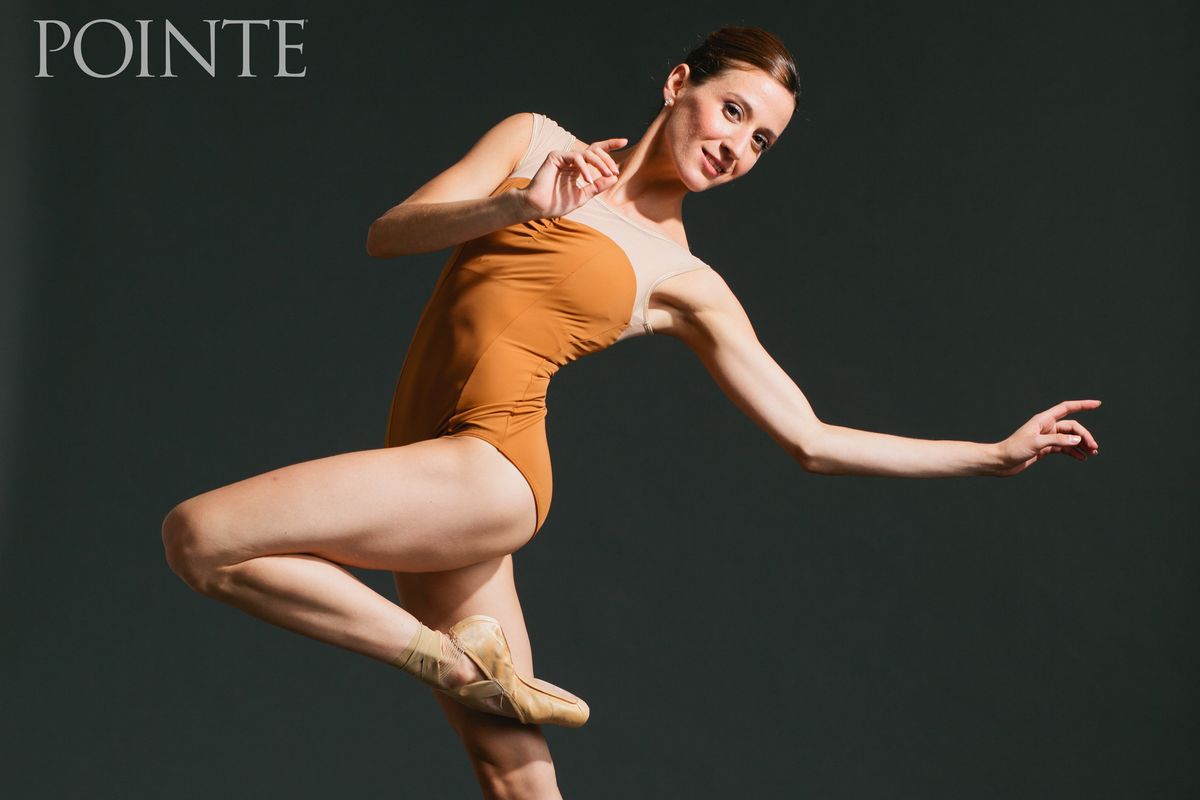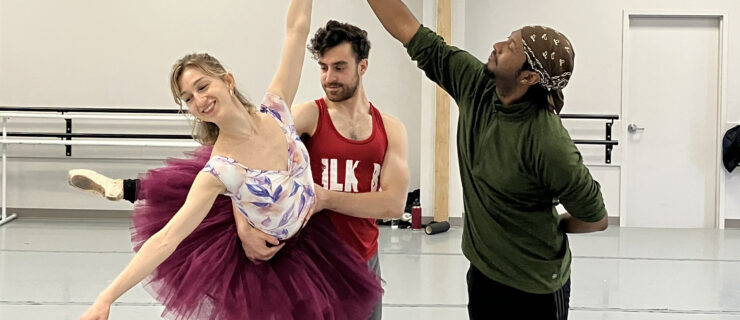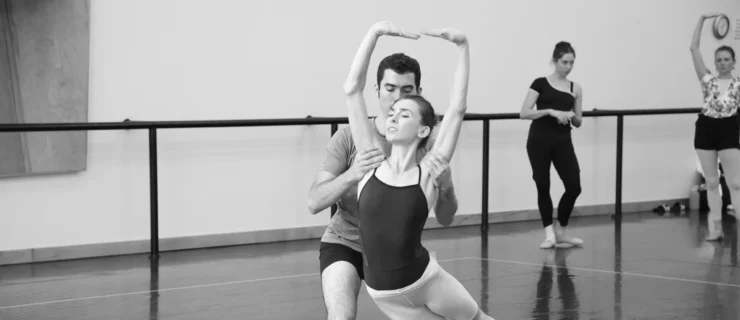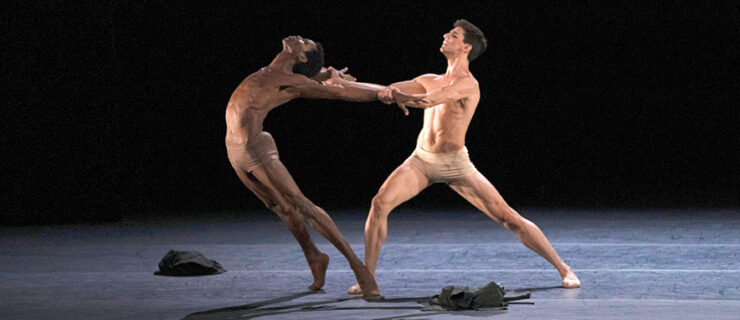Paris Opéra Ballet's Newest Étoile Ludmila Pagliero
Hours before the Paris Opéra Ballet was scheduled to broadcast La Bayadère live to cinemas worldwide this March, Gamzatti got injured. In a stroke of bad luck, all of the alternates had also been injured. Ludmila Pagliero got the emergency call; the 28-year-old première danseuse had performed the part two years earlier, but was busy dancing Mats Ek’s Appartement on the company’s other stage. Despite having less than a day to relearn the role, Pagliero managed a blend of technical and theatrical authority that didn’t betray any lack of preparation. And in a true coup de théâtre, at the end of the curtain calls, she was rewarded with the Paris Opéra’s ultimate crown: a promotion to “étoile,” which literally means “star.”
It takes a special kind of sangfroid and determination to succeed at POB as a foreigner, and Pagliero is the company’s first South American dancer. With her modest extensions, she is practically old-fashioned in the post-Guillem ballet world. Despite a steely technical base, she doesn’t pull out tricks simply to impress an audience. She is a dancer’s dancer, the kind who delivers with unmannered clarity and a velvety fluidity, letting the choreography speak for itself.
A Buenos Aires native of Italian, Spanish and Czech ancestry, Pagliero was put by her parents into dance classes to burn off excess energy. When teachers suggested she audition for the school of Teatro Colón, the most prestigious ballet company in Argentina, her parents were taken aback. Her father was an electrician, her mother a masseuse, and while her grandfather worked in theater, no one in the family was familiar with the ballet world. They let her try, however, and she got in.
The school provided her with a solid foundation. “Her strength, her supple feet made her stand out,” says Ricardo Bustamante, then artistic director of the company. “She was also a fast learner.” Pagliero performed as an extra with Teatro Colón, but no full-time positions had been available in five years. When Pagliero was 16, Bustamante moved to Ballet de Santiago in Chile and offered her a corps contract. “He told me to talk it over with my parents,” she says, “but I said no, I’ll come. I was desperate to start my career.”
Being a teenager in a foreign company wasn’t easy. “She definitely struggled, she could be hard on herself,” says Bustamante. “But she didn’t waste a minute in the studio—she was always ready to work.” She was promoted to soloist and assigned some of the hardest repertoire, from The Sleeping Beauty to Theme and Variations. “I was so young I wasn’t even afraid,” she says. “I just did it.”
After three seasons, Pagliero began to crave exposure to the wider ballet world. She entered the 2003 New York International Ballet Competition to be seen by other directors. It paid off. She won a silver medal, and the prestigious Igor Youskevitch Award, which comes with a one-year contract with American Ballet Theatre.
Soon afterward, Pagliero heard that the Paris Opéra was holding an open audition. She knew the company mostly from a video her French teacher had shown the class in Buenos Aires: “They were so perfect. The girls were all the same, the lines, the arms. We thought we’d never achieve that.” For her, POB was a childhood dream, but “the kind that never comes true.” While ABT had Argentinian principals like Paloma Herrera, no dancer from South America had ever danced with the Paris Opéra.
Yet Pagliero craved a career in Europe. “I kept telling myself that if I went for it, at least I would have set foot in the Palais Garnier once in my life,” she remembers. The trip was chaotic: A friend of a friend taught Pagliero the mandatory variation in five minutes outside the stage door, and another snuck her into the Palais Garnier for a quick coaching session the day before. With only two full-time contracts available, Pagliero gave it her all, and ranked fifth. She figured that was the end. “I didn’t know the company used the rankings to hire extras,” she says. Two months later, the day she was to finalize her visa to join ABT, POB called, offering a three-month contract. She took it.
In Paris, Pagliero quickly discovered the unglamorous life of surnuméraires, the dancers brought in on temporary contracts to supplement the company’s 154 members. Their job is to learn every corps de ballet spot, to be ready to cover when necessary. For Pagliero, not speaking French was both a hindrance and a help. “I spent hours observing people from the back of the room—it’s a huge company, with a lot of personalities. You have to be very humble,” she says. France was also a shock. “Paris is so huge, people walk so fast. The food was great, but I felt a little lost. I wanted to go home after the three months.”
Her contract was extended twice, however, and while at one point she didn’t set foot on stage for six months, she soldiered on. “I became obsessed with the classes. I wanted to understand the French style; I found the footwork extraordinary. The teachers rebuilt my technique completely: My leg muscles became longer, I changed pointe shoes, I learned to use my back properly.”
The hardest part was trying to feel at home in the notoriously closed Paris Opéra Ballet, where about 95 percent of company members come through the affiliated school. “I had to stand up for myself, to prove I worked as hard or twice as hard as anyone else,” she says. In her second year, Pagliero’s persistence earned her a small role, one of the fairies in The Sleeping Beauty, an unprecedented honor for a surnuméraire. She performed well, and at the 2005 open audition, she was awarded a full-time contract.
There was still a difficult road ahead. To refine her style, Pagliero asked Aurélie Dupont, the quintessential French ballerina, to work with her. (Younger POB dancers often train privately with more experienced members.) The company has a strict hierarchy of five ranks: quadrille, coryphée, sujet, premier danseur and étoile. To move up, dancers take the infamous concours de promotion, a yearly internal competition. After one failed concours, Pagliero was promoted every time she competed, dancing small and big roles along the way.
“You notice Ludmila because she is so strong and driven,” says artistic director Brigitte Lefèvre. “She managed to take the best of the French school without losing her identity.” Lefèvre started casting Pagliero in POB’s expanding contemporary repertoire soon after she joined full-time. “She’s open to everything,” Lefèvre says. “She can take any kind of choreography and do something personal and thoughtful with it.”
Pagliero’s Gamzatti performance wasn’t the first time she’d made a last-minute save. Last fall when an étoile dropped out of the premiere of La Source, choreographer Jean-Guillaume Bart asked for Pagliero. “Every correction you give her is absorbed by the next day,” he says. She stepped in despite a minor injury. Her pure placement and unostentatious musicality showed how far she’d come.
The pressure was even greater for Bayadère, and when Lefèvre stepped on stage to announce Pagliero’s promotion to étoile, the entire company joined in the storm of applause. Surrounded by Dupont, her mentor, and Josua Hoffalt, one of her favorite partners, the new star froze in disbelief before burying her face in her hands, overcome with emotion.
For Pagliero, it was the climax of a career earned the hard way. So where does such inner fortitude come from? Pagliero is demure about it, deeming herself a “workaholic” and adding with a laugh that she dreams of doing “everything.” Her one indulgence is travel—one of her goals is to climb the Himalayan mountains. For a dancer who’s conquered one of the most daunting peaks in the ballet world, it should be a walk in the park.





